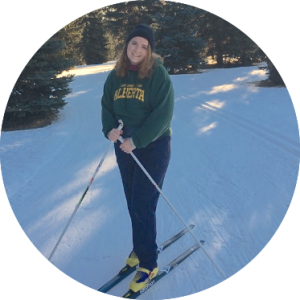Encountering gendered experiences in the wild: An investigation of constraints in women’s developmental process of outdoor recreation

Individuals’ developmental processes in outdoor recreation activities provides manybenefits at both individual and societal levels. However, people can be subjected to particular constraints that impede their recreation participation based on certain socio-demographic characteristics. The social construct of gender plays a particularly important role in the formation of outdoor experiences. This research examines gender through the framework of recreation specialization using qualitative methods.
At a societal scale, maintaining and developing these types of direct interactions with the natural world can garner additional support for pro-conservation attitudes and behaviours (Needham & Little, 2013). In Alberta, outdoor recreationists are more likely to support conservation initiatives such as the acquisition of land for non-consumptive reasons than people that don’t participate in outdoor recreation activities (Canadian Parks and Wilderness Society [CPAWS], 2015). At an individual level, these benefits are most notably observed through improvements to health, well-being, and enhancements in self-development (Eigenschenk et al., 2019). Yet, these benefits are thought to be disproportionately accessible to individuals with certain socio-demographic characteristics (Stanley, 2020).
The goal of my research is to understand the role that gender plays in outdoor recreation participation through the framework of recreation specialization, which helps to explain outdoor recreation engagement. This work is exploratory and is focused on the experiences of women who are members of women’s only outdoor recreation groups. Four objectives inform this goal:
- Investigate the concept of recreation specialization in women’s outdoor recreation experiences to develop deeper understandings of the processes that evoke individualistic differences in outdoor recreation engagement.
- Explore how women conceptualize their participation in outdoor recreation activities and the experiences that they have. Women’s degree of engagement in an outdoor recreation activity may place particular importance upon certain aspects of their participation.
- Discuss how women perceive their engagement in outdoor recreation activities: How do women define their own outdoor recreation experience.
- Identify and characterize the constraints that impede women’s participation and progression in an outdoor recreation activity.
Literature Cited
Canadian Parks and Wilderness Society. (2015). Albertans’ values and attitudes toward recreation and wilderness.https://aref.ab.ca/wp-content/uploads/2016/05/CPAWS-Recreation-and-Wilderness-FINAL-REPORT-2015-003.pdf
Eigenschenk, B., Thomann, A., McClure, M., Davies, L., Gregory, M., Dettweiler, U., & Inglés, E. (2019). Benefits of outdoor sports for society. A systematic literature review and reflections on evidence. International journal of environmental research and public health, 16(6), 937. https://doi.org/10.3390/ijerph16060937
Needham, M. D., & Little, M. L. (2013). Voluntary environmental programs at an alpine ski area: Visitor perceptions, attachment, value orientations, and specialization. Tourism Management, 35, 70-81. https://doi.org/10.1016/j.tourman.2012.06.001.
Stanley, P. (2020). Unlikely hikers? Activism, Instagram, and the queer mobilities of fat hikers, women hiking alone, and hikers of colour, Mobilities, 15(2), 241-256. DOI: 10.1080/17450101.2019.1696038

